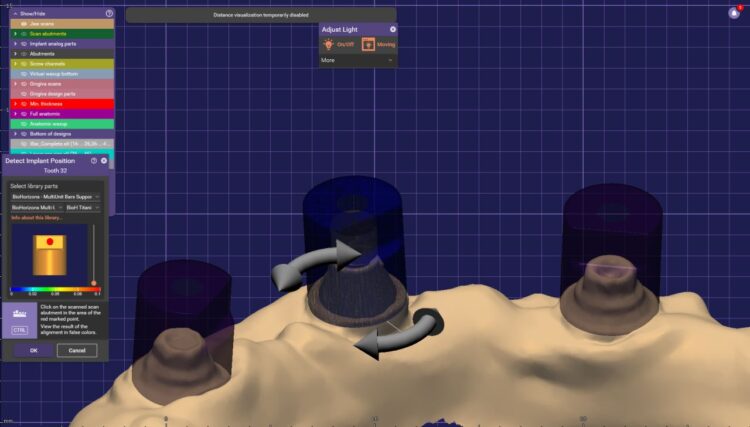
Welcome Westwood to join ALS Dental Group!
We’re excited to welcome Westwood Dental Laboratory to the ALS Dental Group, further strengthening our growing dental network across the UK.
At Bristol CADCAM, we recently had the chance to examine two implant cases from Bristol Crown, demonstrating the significant impact of technology on results.
By: Tom Mitchell
Published: 16th December 2024

In the first case, the implant scan was submitted using a traditional intraoral scanner (IOS) and scan bodies. As you can see the images, we couldn’t confirm the true orientation of the scan bodies because the IOS data was unreliable.
Unfortunately, this led us to the tough decision of rejecting the case from Bristol Crown. Given the lack of accurate information, we felt it was essential to prioritise the bar’s fit and functionality, so we opted for caution in this instance.

On the other hand, we had a second case using an IOS paired with photogrammetry technology. This allowed us to capture the implants’ orientation and position accurately, making the case processing smooth and efficient. The outcome was a first fit without needing a verification jig, adjustments, or remakes.
This comparison underscores the exciting potential of photogrammetry in modern dentistry. Taking the guesswork out of the equation equips labs and clinicians with the accuracy essential for navigating complex restorations, leading to better outcomes for everyone involved.


As dental technology evolves, tools like photogrammetry are helping to bridge gaps in accuracy and efficiency. It’s an exciting time to see how these advancements shape the future of restorative dentistry.
For more information, get in touch with us now https://bristolcadcam.com/
Author: Tom Mitchell, Sales Manager – Bristol CadCam

We’re excited to welcome Westwood Dental Laboratory to the ALS Dental Group, further strengthening our growing dental network across the UK.

We’re thrilled to welcome three fantastic dental laboratories to the ALS Dental Group, further strengthening our growing dental network across the UK.

Zirconia Crowns and Bridges offer several advantages over Porcelain Bonded restorations. In this article Victoria Macpherson, ALS Academy Director, describes some of the key benefits.